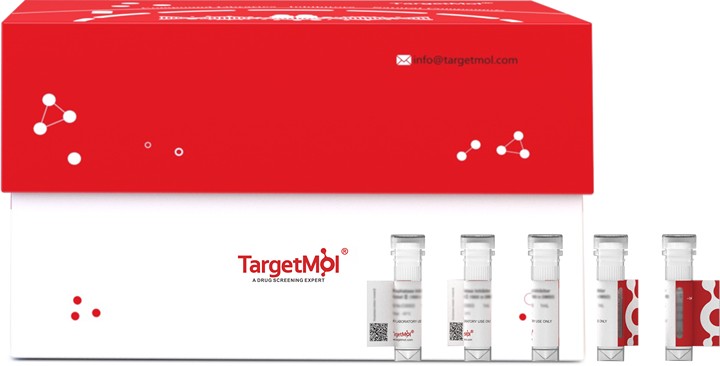Shopping Cart
Remove All Your shopping cart is currently empty
Your shopping cart is currently empty
PLA2G5 Protein, Mouse, Recombinant (His & SUMO) is expressed in E. coli expression system with N-6xHis-SUMO tag. The predicted molecular weight is 29.8 kDa and the accession number is P97391.

| Pack Size | Price | USA Warehouse | Global Warehouse | Quantity |
|---|---|---|---|---|
| 5 μg | $105 | 20 days | 20 days | |
| 10 μg | $169 | 20 days | 20 days | |
| 20 μg | $283 | 20 days | 20 days | |
| 50 μg | $428 | 20 days | 20 days | |
| 100 μg | $590 | 20 days | 20 days | |
| 200 μg | $913 | 20 days | 20 days | |
| 500 μg | $1,620 | 20 days | 20 days | |
| 1 mg | $2,530 | 20 days | 20 days |
| Biological Activity | Activity has not been tested. It is theoretically active, but we cannot guarantee it. If you require protein activity, we recommend choosing the eukaryotic expression version first. |
| Description | PLA2G5 Protein, Mouse, Recombinant (His & SUMO) is expressed in E. coli expression system with N-6xHis-SUMO tag. The predicted molecular weight is 29.8 kDa and the accession number is P97391. |
| Species | Mouse |
| Expression System | E. coli |
| Tag | N-6xHis-SUMO |
| Accession Number | P97391 |
| Synonyms | Pla2g5,PLA2-10,Phospholipase A2 group V,Phosphatidylcholine 2-acylhydrolase 5 |
| Amino Acid | GLLELKSMIEKVTGKNAFKNYGFYGCYCGWGGRGTPKDGTDWCCQMHDRCYGQLEEKDCAIRTQSYDYRYTNGLVICEHDSFCPMRLCACDRKLVYCLRRNLWTYNPLYQYYPNFLC |
| Construction | 21-137 aa |
| Protein Purity | > 90% as determined by SDS-PAGE. |
| Molecular Weight | 29.8 kDa (predicted) |
| Endotoxin | < 1.0 EU/μg of the protein as determined by the LAL method. |
| Formulation | Tris-based buffer, 50% glycerol |
| Reconstitution | A Certificate of Analysis (CoA) containing reconstitution instructions is included with the products. Please refer to the CoA for detailed information. |
| Stability & Storage | Lyophilized powders can be stably stored for over 12 months, while liquid products can be stored for 6-12 months at -80°C. For reconstituted protein solutions, the solution can be stored at -20°C to -80°C for at least 3 months. Please avoid multiple freeze-thaw cycles and store products in aliquots. |
| Shipping | In general, Lyophilized powders are shipping with blue ice. Solutions are shipping with dry ice. |
| Research Background | Secretory calcium-dependent phospholipase A2 that primarily targets extracellular phospholipids. Hydrolyzes the ester bond of the fatty acyl group attached at sn-2 position of phospholipids (phospholipase A2 activity), preferentially releasing fatty acyl groups with a low degree of unsaturation such as oleoyl (C18:1) and linoleoyl (C18:2) groups. Hydrolyzes low-density lipoprotein (LDL) phospholipids releasing unsaturated fatty acids that drive macrophage polarization toward an M2 phenotype. May act in an autocrine and paracrine manner. Contributes to lipid remodeling of cellular membranes at different subcellular locations and generation of lipid mediators involved in pathogen clearance. Cleaves sn-2 fatty acyl chains of cardiolipin, a major component of the inner membrane of mitochondria and bacterial membranes. Promotes phagocytosis of bacteria in macrophages through production of lysophosphatidylethanolamines. Displays bactericidal activity against Gram-positive bacteria by directly hydrolyzing the phospholipids of the bacterial membrane. Promotes phagocytosis and killing of ingested fungi likely through controlling phagosome-lysosome fusion and phagosome maturation. Plays a role in biosynthesis of cysteinyl leukotrienes (CysLTs) in myeloid cells. In eosinophils, triggers perinuclear arachidonate release and LTC4 synthesis in a PLA2G4A-independent way. In neutrophils, amplifies CysLTs biosynthesis initiated by PLA2G4A. Promotes immune complex clearance in macrophages via stimulating synthesis of CysLTs, which act through CYSLTR1 to trigger phagocytosis. May regulate antigen processing in antigen-presenting cells. In pulmonary macrophages regulates IL33 production required for activation of group 2 innate lymphoid cells. May play a role in the biosynthesis of N-acyl ethanolamines that regulate energy metabolism. Hydrolyzes N-acyl phosphatidylethanolamines to N-acyl lysophosphatidylethanolamines, which are further cleaved by a lysophospholipase D to release N-acyl ethanolamines. |
| Size | Quantity | Unit Price | Amount | Operation |
|---|

Copyright © 2015-2026 TargetMol Chemicals Inc. All Rights Reserved.